In today’s fast-paced business environment, efficiency and scalability are paramount. 3PL warehouses have emerged as a game-changing solution for companies looking to streamline their supply chains. But what exactly is a 3PL warehouse, and how does it differ from traditional storage? More importantly, how can it benefit your business? Let’s explore.
What is a 3PL Fulfilment Warehouse?
A 3PL (Third-Party Logistics) fulfilment warehouse is a specially designed facility where a third party or external services provider works to store and regulate inventory for businesses of different niches, process orders, and is responsible for shipping and handling logistics. Unlike traditional warehouses, whose ambit only covers storage, 3PL warehouses come up with providing end-to-end solutions through advanced technology, automation, and logistics expertise, allowing owners to invest their time in boosting their business growth profits.
For instance, you are running an e-commerce store, but you are unable to maintain the manufactured product. Moreover, it is a waste of your time just to contact the courier company and make every single order reach customers. Hence, instead of managing it yourself, if you hand over your supply chain immediately after manufacturing to the customer’s doorstep, toys are taking services from the 3PL warehouse. 3PL because that warehouse would be doing everything for you at the back end with your branding as the front end. This not only eliminates the need for an in-house logistics team but also allows you to focus on growing your business while leaving the fulfilment complexities to the experts.
The Difference Between 3PL Warehouses and Traditional Storage
Although 3PL warehouses and traditional storage facilities are often considered responsible for doing the same, i.e., storage, this is not the case. Here is a quick comparison of how 3PL warehouses are different from traditional storage.

The Role of a 3PL Warehouse Management System (WMS)
A Warehouse Management System (WMS) is the linchpin of any 3PL warehouse. It is software that helps companies manage and control daily warehouse operations throughout the supply chain, that is, from the time manufactured goods enter the fulfilment warehouse to the moment they leave. Thus, WMS allows real-time visibility into the company’s entire inventory. Additionally, it assists in the picking and packing process to streamline the supply chain. According to a study by ARC Advisory Group, WMS can help fulfilment warehouses reduce picking errors to around 67 percent. Moreover, according to the estimation of another study at Gartner, businesses implementing a WMS in #PL warehouses experience a 35 percent improvement in order accuracy and a 25 percent reduction in operation costs. Hence, with WMS, not only efficiency can be improved, but company satisfaction can also be ensured with accurate and timely deliveries.
In sum, Key Features of a WMS in 3PL Warehouses include
- Real-time inventory tracking – Prevents stockouts and overstocking.
- Automated picking and packing – Reduces manual errors and enhances speed.
- Order accuracy and traceability – Ensures seamless end-to-end tracking.
- Integration with marketplaces – Connects platforms like Amazon, eBay, and Shopify for smooth fulfilment.
3PL Warehouse Software and Automation: Reducing Errors & Improving Efficiency
WMS is the one manifestation of technology in fulfilment warehouses. Many technology options are available that play a crucial role in 3PL warehouse efficiency. Advanced automation and AI-driven logistics significantly minimize human errors while improving speed and accuracy. For instance, RFID and barcode scanning ensures real-time inventory updates on which items have gone to customers and how many are left, helping manage restocking too. Likewise, automated conveyor belts speed up order processing significantly. Robotic picking systems and AI-empowered forecasting, if executed by any 3PL warehouse, can enhance warehouse efficiency and maintenance with human errors and the need for additional human capital, as per the report of McKinsey and Company, companies who use automated systems in their warehouses report a 25 percent increase in efficiency.
Cost Analysis: 3PL Warehouse Charges vs. In-House Warehousing Costs
Despite providing customers with all the technology, cost efficiency is one of the most significant advantages of using a 3PL warehouse. Where in-house warehousing requires substantial upfront investment in infrastructure, staffing, and technology, 3PL providers offer flexible pricing models tailored to your needs. Per the stats of Inbound Logistics, outsourcing to a 3PL warehouse could reduce these costs by up to 30% compared to in-house warehousing with added rent, utilities, and labour costs in the latter.
Cost Comparison: In-House vs. 3PL Fulfilment Warehouse
| Cost Factor | In-House Warehousing | 3PL Fulfilment Warehouse |
| Fixed Costs | Rent, utilities, labor | Pay-per-use model |
| Inventory Handling | Manual | Automated, optimized |
| Shipping Rates | Standard | Discounted bulk rates |
| Scalability | Requires investment | On-demand scaling |
| Maintenance & Tech | In-house team required | Managed by 3PL |
3PL Warehouse Services for Various Shops
3PL warehouses cater to various industries, from e-commerce to retail. By integrating with Shops, 3PL warehouses can handle everything from inventory storage to last-mile delivery. Let’s take a closer look at how they support modern shopping platforms. One such manifestation is TikTok Shop. For example, let’s break down the 3pl warehouse for the Tiktok shop.
3PL Warehouse for TikTok Shop
TikTok Shop has revolutionized social commerce, allowing businesses to sell directly through the platform. However, managing inventory and fulfilling orders can be challenging for sellers. This is where 3PL warehouses come in with the following roadmap to work on.
First, the 3PL warehouses integrate with your TikTok Shop, automatically syncing orders with their system. Whenever a customer places an order, it is instantly received by the 3PL.
Moreover, they store and manage your inventory in their fulfilment centres. You ship your products to them, and they organize stock while providing real-time inventory tracking. This prevents stockouts and ensures smooth operations.
Once an order arrives, the warehouse team picks, packs, and labels the products. Some 3PL warehouses, in particular, called 3PL centres, even offer custom packaging, allowing you to enhance your brand experience. After that, the order is shipped directly to the customer using partnered carriers like DHL, FedEx, etc. The tracking details are updated in the TikTok Shop, informing customers about their delivery.
If a customer requests a return, the 3PL handles reverse logistics, inspecting and restocking items if possible. Some providers also assist with customer service for fulfilment-related inquiries.
Bottomline
In a world of critical speed and efficiency, 3PL warehouses offer a scalable and cost-effective solution for modern businesses. From advanced WMS systems to cutting-edge automation, these facilities are designed to optimise costs, enhance efficiency, and provide a seamless fulfilment experience.
At Kun Fulfilment, we specialize in delivering 3PL solutions that meet the unique needs of your business. Whether you’re a small e-commerce store or a large retailer, our fulfilment warehouse ensures your operations run smoothly, allowing you to focus on what you do best—growing your business.

